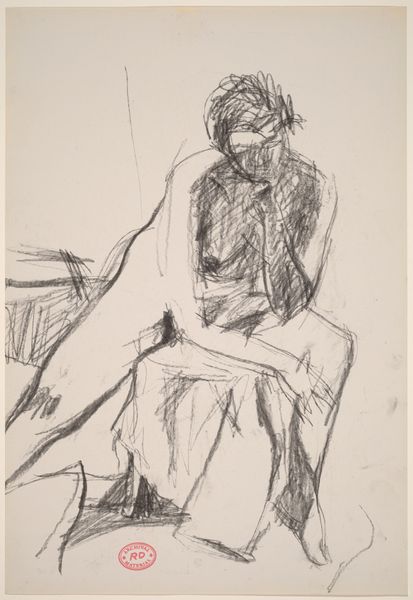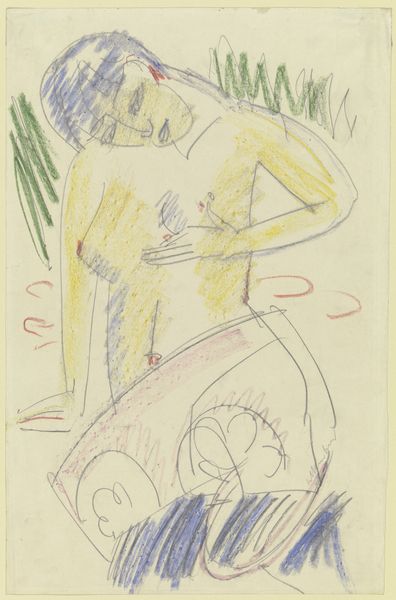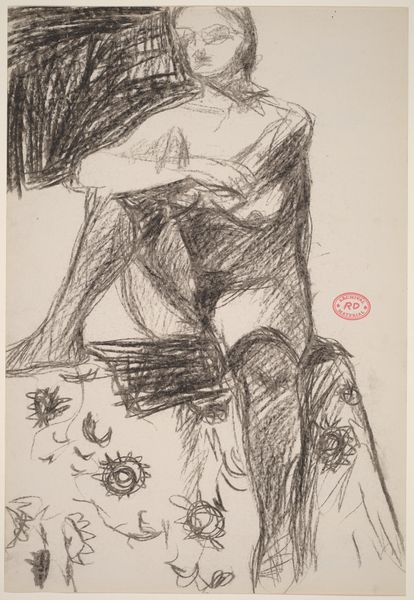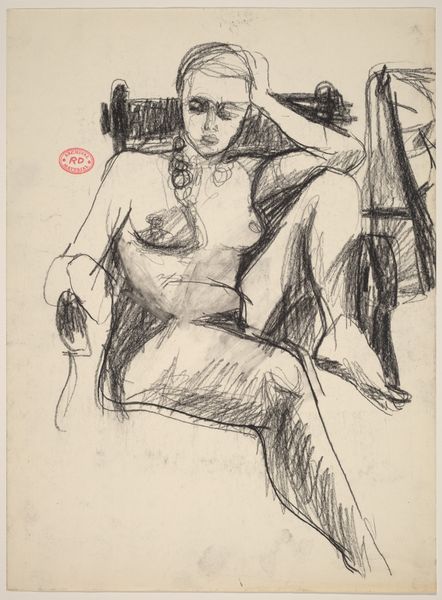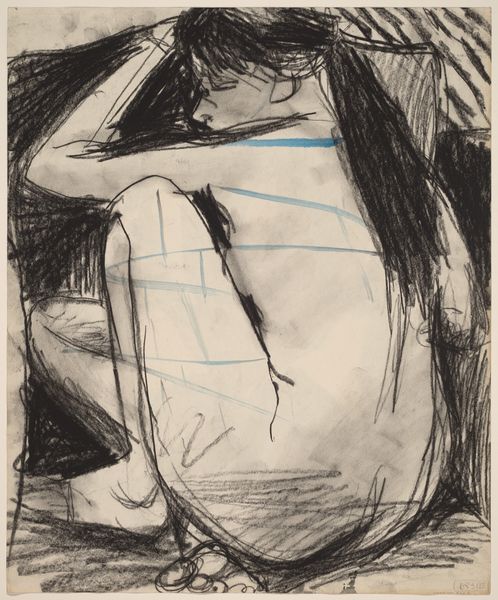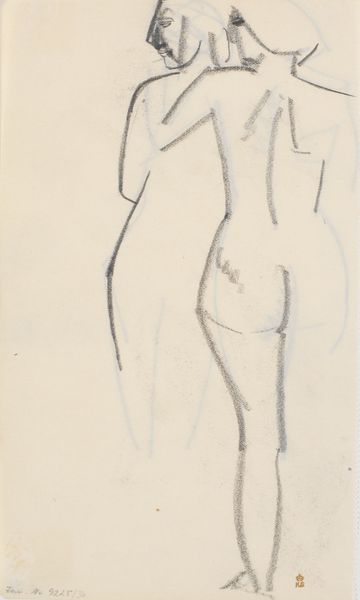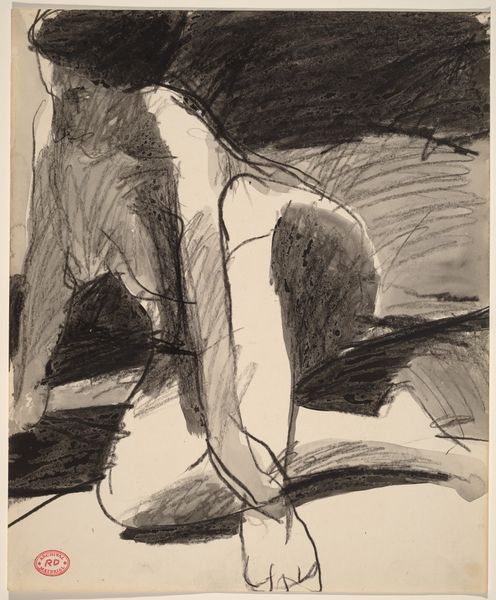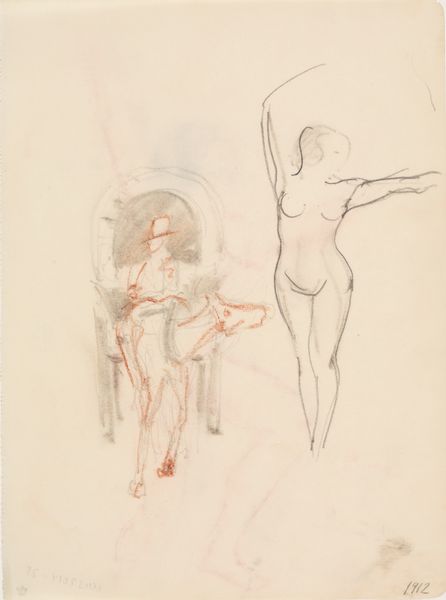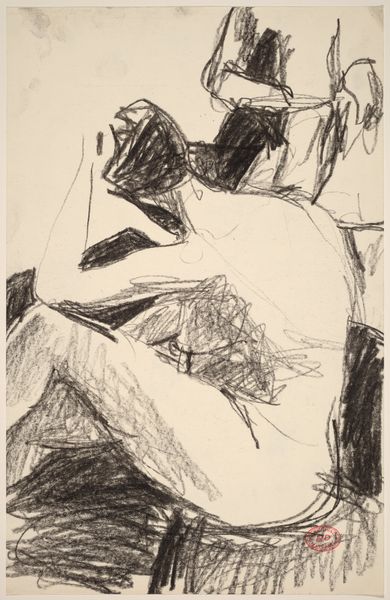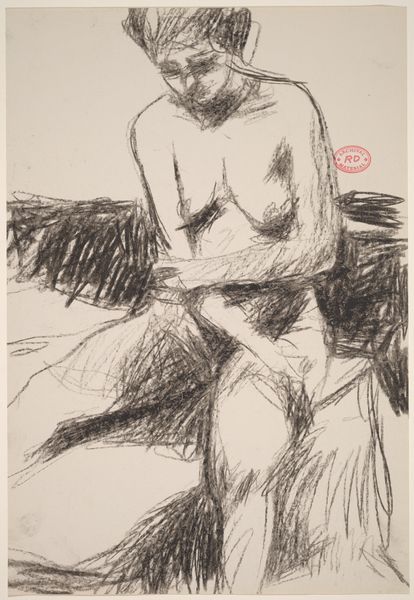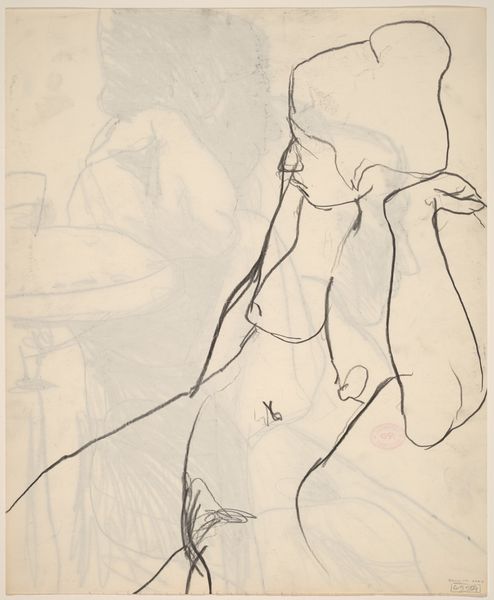
Copyright: Public Domain
Curator: Ernst Ludwig Kirchner’s "Zwei nackte Frauen im Walde," dating from around 1934, is before us. It's a colored pencil and chalk drawing held by the Städel Museum. I'm curious about your immediate impression? Editor: Oh, it has that classic Kirchner tension. An unfinished quality that is sort of haunted but with playful colors; feels like a sketch, an intimate glimpse. Like walking in on a dream, doesn't it? Curator: Yes, that dreamlike state certainly comes through. I am struck by how the visible strokes and choices of material highlight the manual labor. We’re witnessing a specific method of art production which arguably blurs the boundaries between 'high art' and raw craft; paper as commodity, chalk and pigment as industrial products accessible for mass use, here forming something deliberately disruptive... Editor: True, the means absolutely determine the message. But that disruption, that comes, I think, from a deeper place too. Those women, stark yet somehow hidden among the trees. Are they exposed, or are they free? It makes me feel uneasy in the best possible way! I want to decode these gestures. The textures really hold my eye, do you think he was particularly interested in capturing the raw energy of the materials at hand? Curator: Definitely. If we examine the colored-pencil strokes, it speaks volumes about postwar material circumstances and access. Post-war Germany saw an explosion of such paper and industrial colorants… Editor: All churning within, like colors in a rock tumbler to give us Kirchner's distinct artistic rebellion! A tension you feel on a material level. Curator: Precisely. And it's not only rebellion. Notice how the artist links representation and industrial capacity in Germany. The social implication, as if Kirchner challenges bourgeois complacency by literally making something "naked", visible. Editor: Indeed, his legacy rests on it; to challenge expectations. This piece is both aesthetically pleasing and historically aware, leaving a bittersweet aftertaste that invites conversation and reconsideration. Curator: Leaving us with this quiet scene… material evidence.
Comments
No comments
Be the first to comment and join the conversation on the ultimate creative platform.

